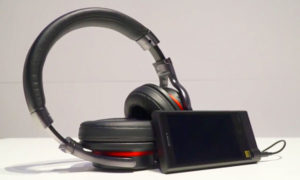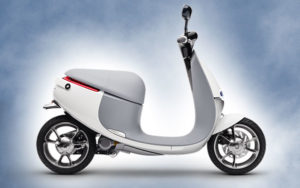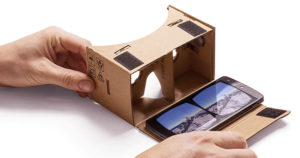
You don’t need Microsoft’s high-powered marketing staff or sophisticated statistics to know where the power currently lies in the portable media player market. Very simply, the score reads something like this: Apple’s iPod, 100 million units shipped; Microsoft’s Zune, 1 million.
Yes, the iPod entered the market a full five years before Zune did; and yes, there’s a smattering of other small competitors. However, when you’re Microsoft, and you’re outplayed 100-to-1 — and then the iPhone comes out with multimedia capabilities — you’ve got to be working hard on a plan.
“Statistically speaking, there is no debate: Apple’s iPod is clearly the No. 1 portable device,” Zippy Aima, an analyst with Frost & Sullivan, told TechNewsWorld.
Music may be the universal language, but Zune is clearly not the universal portable media player. So where does the technology go from here?
The iPod Factor
When the iPod was released in 2001, “it was an instant success,” Aima notes. Apple was in the right place at the right time with the right kind of product, and sales shattered most expectations.
Over the next few years, Apple came out with multiple new generations and price points — including versions with and without video capabilities — reaching 100 million units shipped in less than six years.
“That’s an amazing feat,” Stephanie Ethier, senior analyst with In-Stat, told TechNewsWorld. “The Sony Walkman — another revolutionary product — took a lot longer than that.”
A Top-Heavy Market
So when Microsoft released the Zune last November, the iPod had already won many hearts and wallets. Zune also represented a step away from Microsoft’s PlaysForSure open standard of interoperability and toward the closed, proprietary sort of model Apple used, with a device and a site — the Zune Marketplace — for purchasing content.
Whether Microsoft intended Zune to be an “iPod killer” is subject to debate; at the very least, “I think they wanted to capture a significant share of a very popular and still-growing market, and to do that, they would have to compete with the iPod,” Ethier said.
Today, the iPod outshines all its competitors, accounting for 100 million of 182 million portable media players worldwide, Ethier said.
By another count, iPods accounted for 58 percent of the market in the second quarter of 2007, followed by Creative Zen with 12 percent, SanDisk with 7 percent, Sony with 4 percent, and Samsung and Zune with 3 percent each, according to a Park Associates study.
Toshiba, iRiver, Philips and Archos make up the last few slices of the market, the study found.
What Went Wrong?
“Apple was able to capitalize on the opportunity of the portable media player market at a much earlier stage than Microsoft was, so Zune is not as getting as much attention as it should have, or ideally deserved,” Aima noted.
Indeed, Microsoft’s late entry into the market is perhaps the biggest factor behind Zune’s lackluster performance so far.
Price is another issue, with Zune coming in at around US$250 while the iPod can be below $100. “If I have to choose between a $300 Zune and a $70 iPod, which is so popular and almost cult-like, my instinct is going to be to get an iPod,” Aima said.
The ‘Cool’ Factor
Then there’s the fact that Microsoft is Microsoft. “It’s an incredible brand name, but when it came to competition with Apple’s iPod, a different kind of consumer — younger, hipper — was at stake,” Ethier noted. “I don’t think Microsoft had the ‘cool’ factor for portable consumer electronics to pull any significant market share away from Apple.”
Content availability is a factor too, at least on the video side. Video tends to be less important to media player users than music is, Harry Wang, senior analyst with Parks Associates, told TechNewsWorld. Nevertheless, the Zune Marketplace lags behind Apple’s iTunes for video, he explained: “We have found Zune loses out to iPod Video because of content.”
A Lonely World
Zune’s much-touted WiFi capabilities and ability to share files with other Zune users haven’t quite lived up to expectations, either, largely because “Zunes talk to other Zunes, but not to any WiFi-capable device,” Ethier noted. “If only 1 million Zunes have been shipped, the next Zune user might be in Duluth (Minn.).”
File-sharing is also just not something many users want, Wang added. Only 15 percent of consumers intending to buy a portable media player said that wireless sharing was a highly important feature — it was last in importance on a list of eight possible features, according to the Parks Associates survey. Integrated cellular capability for making phone calls, on the other hand, was rated top of that list in importance.
That brings us to Apple’s iPhone, which was released last month to a market feverish with excitement. “The iPhone has received the same sort of consumer response that the iPod did six years ago,” Aima noted.
Yet with its $500 price tag, the iPhone may be more of an iPod upgrade for high-end consumers, Wang said. “The iPhone is more likely to undermine Apple’s own fan base than Zune’s,” he explained. “In the short term, we don’t expect it to put a dent in demand for Zune or Zune Marketplace.”
“These are two different products,” Ethier agreed. “People who want an iPhone are looking for a voice product with the iPod included.”
R.I.P. Zune?
There’s no denying Zune is currently at a big disadvantage; is it on its way out?
“It’s still too early to say,” Wang said. “I think Microsoft will probably spend another two to three years trying to cultivate the Zune brand and experiment to see if it can get market share from Apple.”
Indeed, Microsoft’s success with Xbox depended on a similar strategy of perseverance, since there were two other strong, competing brands — Nintendo and Sony’s PlayStation 3 — to contend with, Wang explained.
“It eventually gained traction, and now Microsoft can apply that experience to other hardware platforms,” he said.
The Next Generation
Because Microsoft has sold a million devices, at least some consumers are interested in Zune, Frost & Sullivan’s Aima added. “It didn’t create a sensation, but that doesn’t mean it will be completely eliminated.”
Microsoft is reportedly working on new Zune generations and price points, she added, suggesting that the company believes its investment in Zune will pay off in the long term, if not instantly. “They may not create a huge buzz in the market, but it will give consumers more choice,” Aima said.
Following the lines of the iPhone, “my guess is we might see a voice-capable product with music built in,” In-Stat’s Ethier predicted.
Not Over Yet
Multimedia, music-capable cell phones are certainly a growing market, but “we don’t expect that market to displace portable media players,” Ethier said. “We do think music-capable cell phones will start to take the place of lower-end MP3 players that play only audio.”
Of course, in the end, portable media players are just one piece in the ongoing “battle for the living room,” in which Microsoft is competing on multiple fronts, Wang added.
“It takes time — a turnaround could still happen,” he said. “This isn’t over yet.”






















































One of the element key to the success of the iPod, which commentators either fail to mention or fail to consider, is iTunes.
I do not mean the iTunes Store, but just iTunes. iTunes is one of the best ways to manage a large music/podcast library.
The iPod/iTunes combination is typical of Apple’s approach where Apple considers the whole user experience. If it is difficult to get music on to ones portable music player then it is far less enjoyable and useful portable music player.
As you noted, the most requested feature was a cell – lo and behold, the iphone, only a few hundred dollars more than a deadend zune with zero cachet. For a few hundred more, they get an ipod wrapped around an iphone – two of the most cachet devices in the last 6 years. 70% of Zune users said they wanted an iphone.
Not sure why they keep talking up the Xbox likes it’s some great hope of MS. They are in the hole for $16 BILLION in which they will never recover – especially with a product with a 40% fail rate and MS’ refusal to recall it. It’s the Ford Explorer of 2007. It’s dead. The name branding is now equated with a dead console.
Since your logic is that it’s the timing of Apple’s entry into the mp3 market that explains its success relative to Zune, the iPhone will be a miserable failure because it’s even later to the cell phone market than Zune was to the music player market.
We’ll see. BTW, the iPod wasn’t received with anything remotely close to the response to the iPhone.
Jim